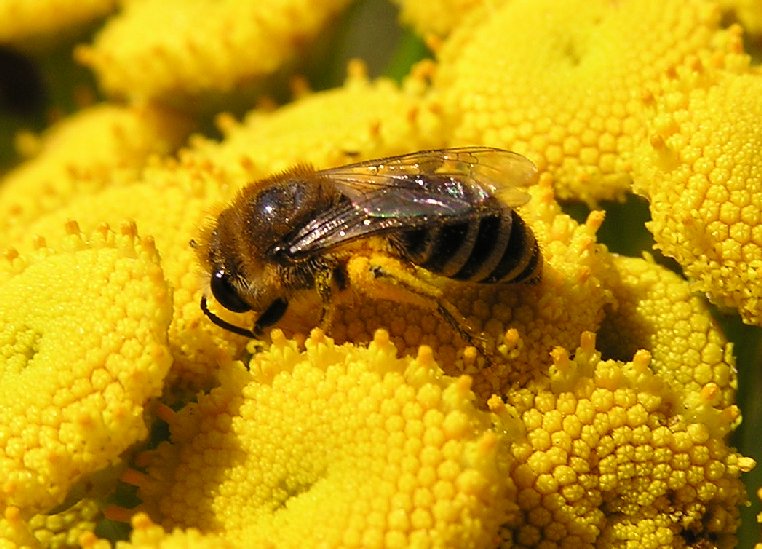Solitary/Ground Bees
Andrenidae (mining bees); Colletidae (plasterer bees); Halictidae (sweat bees)
Identification
- 1/8 - 3/4 inch long
- coloration variable: brown to black to metallic green
Nesting Habits
- solitary, but often nest together in favorable sites in the ground (not in colonies)
- favorable sites are often areas of bare soil
Diet
- nectar, pollen
Significance
- nests pose a minimal health risk to humans
- can sting, but sting is mild
- important pollinators
IPM Recommendations
- Monitor for nests early summer - fall.
- Purchase and use a bee veil, suit and gloves.
- Eliminate nesting habitat by proactively renovating bare soil areas with turf or other cover.
- Rope-off areas with these bees to keep individuals away from aggregations until they become inactive (then renovate nesting site).




